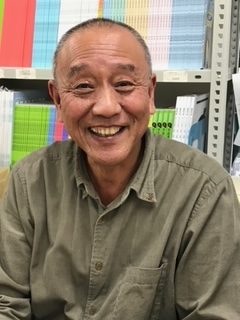[JITF2021] Exploring the Philosophy of Sign Language Interpreting in light of the Wishes of the Deaf and the Theory and Practice of Sign Language Interpreting

Norio Kawane
My first step toward becoming a sign language interpreter was the 20-hour Sign Language Volunteer Training Course held for the first time in Chiba Prefecture in 1971 (the fiscal year 1970) (the current sign language volunteer training curriculum takes 80 hours). My development as a sign language interpreter from a novice to a professional is the result of the support of deaf people and other friends in the community and all over Japan. Below are some of the activities of our central organization.
In 1974, I became a member of the just-formed National Research Association for Sign Language Interpretation, a nationwide organization that researches sign language, sign language interpretation, and issues of deaf people, and works for the improvement of the welfare of deaf people and the improvement of the social position of sign language interpreters.
In 1976, I began working for Sakura City Hall in Chiba Prefecture as a caseworker capable of sign language interpreting.
In 1989, the first sign language interpreter certificate (sign language interpreter) examination (certified by the Minister of Health, Labor and Welfare) was held, in 1991, the Japanese Association of Sign Language Interpreters, a general incorporated association, was established to improve the qualifications and professional skills of sign language interpreters and contribute to the development of the sign language interpreter system, and in 1993, I became a director.
The academic societies I belong to, namely, the Japanese Association of Sign Language Interpreters, the Japan Society for Early Stage of Dementia, and the Japan Association of Local Government Policy Studies have provided me with many learning opportunities.
Exploring the Philosophy of Sign Language Interpreting in light of the Wishes of the Deaf and the Theory and Practice of Sign Language Interpreting
Demands for sign language interpreting were born from and deepened by the deaf rights movement, which confronted a society that was mainly concerned with spoken language and dismissed signed language. Herein lies the origin of the philosophy of sign language interpreting (professionals).
The acquisition and transmission of information, interpersonal communications, and the operation of various systems in society are predicated upon the ability to hear.
The inadequacy of social measures to guarantee equality between the deaf and hearing people has caused various difficulties for the deaf, such as disadvantages in daily life and the lack of opportunities for education in sign language, showing how our country has left the resolution of these problems to the efforts of individual deaf people themselves.
In addition, the social consciousness that produces eugenic thought and the principle of inferior treatment has become a barrier to the realization of equality.
The deaf rights movement, the sign language interpretation movement, and the sign language movement have played a major role in realizing a mature society in which everyone can live with equality. Learning from movements to create a society where each individual is valued, let’s think afresh about the philosophy and practice of sign language interpreting in light of the threefold disabilities of the “deaf,” namely, rejection of sign language, exclusion due to disability, and difficulties of daily living.
*Inferior treatment is the principle that relief shall be provided to ensure a standard of living that does not exceed that of the poorest workers who earn their livelihoods. In Japan, the process of enactment of the Poor Relief Act (1929) before the birth of the Public Assistance Act (1950) is a typical example.